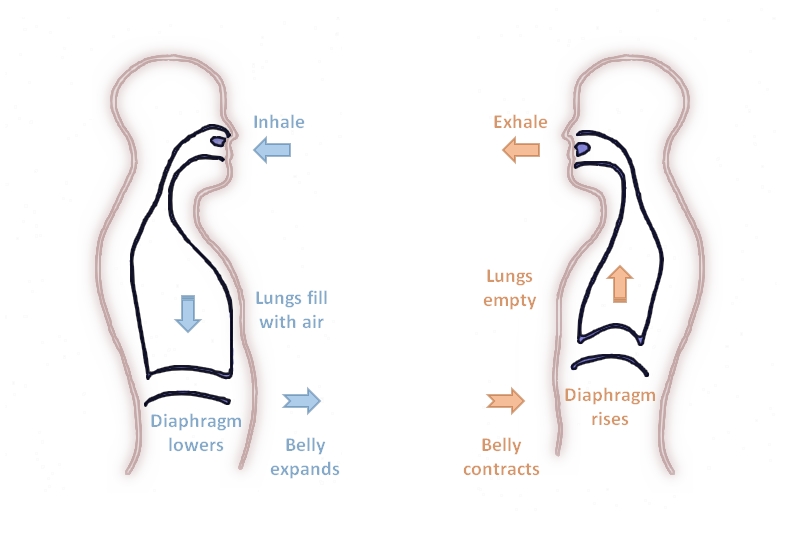“Diaphragmatic breathing” is a concept that can aid the body in many ways. When you breathe from your diaphragm, you get improved air and oxygen circulation in the body. The diaphragm muscle is located horizontally between the thoracic cavity and abdominal cavity. This form of breathing also helps by way of the autonomic nervous system, and can reverse the effects of stress and pain. When you breathe from your diaphragm then the parasympathetic chain tells the body to “rest and digest” and thus calms the stress response. It’s also been reported that diaphragmatic breathing helps lower blood pressure and therefore reduces the risk of heart disease, releases serotonin, a “feel good” hormone, eliminates free radicals from the body which improves cellular function, and even improves sleep quality.
Often, people will not focus on proper breathing and breathe mainly with the use of their accessory muscles in their neck, shoulders, and the upper part of their chest. When people are shallow breathers or not using this diaphragmatic breathing technique, often they are in a state of “fight or flight” from the sympathetic chain portion of the Autonomic nervous system. This may cause increased shallow breathing as well as increased tightness in these muscles. When they begin to focus on diaphragmatic breathing, then the muscles relax and often the tightness and pain in the neck and shoulders decreases.
To perform diaphragmatic breathing, place your hands on the lateral sides of your lower rib cage. This is where your diaphragm inserts. Breathe into your hands and feel your rib cage move outwards toward the sides of the room. Essentially, “breathe into your hands” so you can ensure you feel the proper regions moving. Be sure to relax your neck and shoulder muscles, and keep your shoulders pulled down away from your ears. Hold for 5 seconds, then exhale and breathe out fully. You will feel the rib cage seem to get smaller and come back together. This can be performed in any position- sitting, standing, lying down or while walking. When you have practiced this technique for a while then you can perform it without the use of your hands, because it will become muscle memory and you will not need your hands there for cueing.
Daily diaphragmatic breathing is recommended and It is also very effective to perform this when you feel pain anywhere in the body, as it can help decrease your pain level. Also, if you are feeling stressed out then use this technique at that very moment and you will notice that your body and mind begin to feel less stressed and more relaxed. Start diaphragmatic breathing today, and notice how you can use your breath to feel better!


Recent Comments